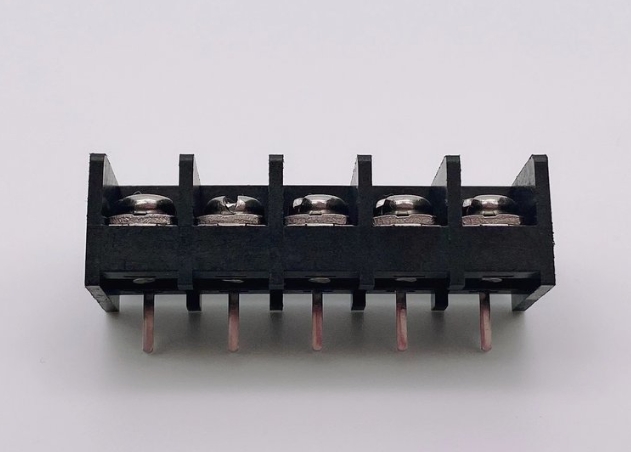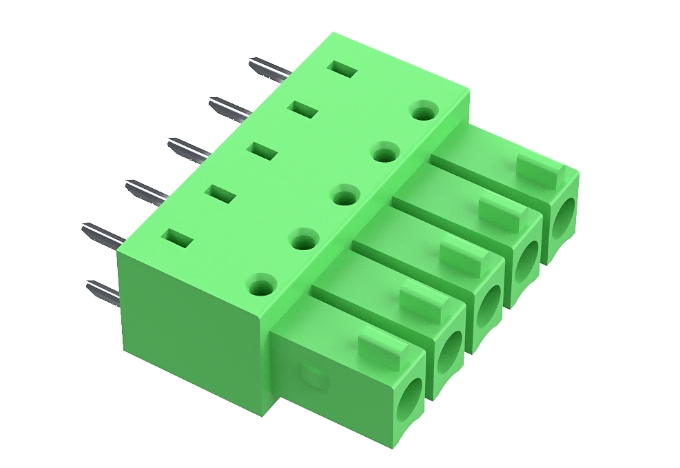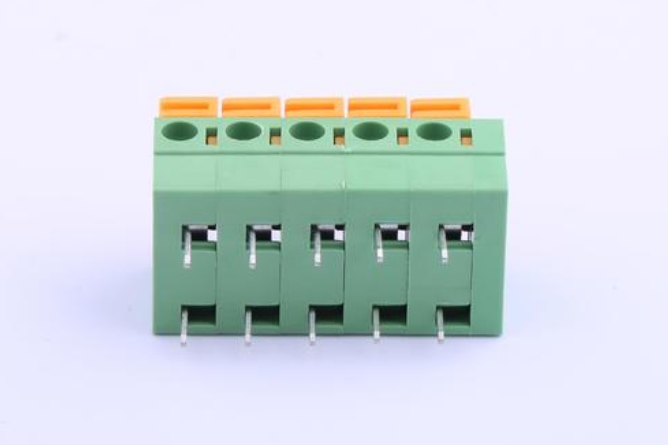PCB terminal block is a key component in printed circuit board (PCB) to realize the electrical connection, according to the different connection technology and structural design, it is mainly divided into the following types:
Table of Contents
1. Barrier Terminal Block (Barrier Terminal Block)

Barrier Terminal Block fixes the wires by screws and is suitable for high-current and high-voltage applications, commonly used in power distribution and industrial equipment. Its metal guide strip separation design can prevent short circuit, but the size is large.
Characteristics: Simple structure and firm crimping, wire diameter range 0.5mm-6mm, clear code identification (e.g. LW, C, B, etc.).
Application: Suitable for high voltage and high current equipment, with strong insulation and protection performance.
2. Plug-in Terminal Block (Plug-in Terminal Block)

Plug-in terminals are connected by snap fasteners to support quick installation and replacement, and are suitable for applications requiring frequent maintenance (e.g. PLC modules). However, the current carrying capacity is low.
Characteristics: Composed of two parts, male and female sockets, the pluggable part is separated from the fixed part of the PCB, supports multi-directional insertion and flexible spacing (e.g., 2.5mm-10.16mm), suitable for conductor cross-section 0.08mm²-10mm².
Application: Modular design, commonly used in scenarios that require frequent insertion and removal, such as industrial control equipment.
Key parameters: pin spacing including 3.5mm, 5.08mm, etc., poles 2-24 wire plug-in terminal spacing.
3. Spring Clamp Terminal

Utilizes spring pressure to hold wires in place and can be operated without tools, making it suitable for compact designs with space constraints (e.g., smart home devices). Highly resistant to vibration, but only supports small to medium currents.
Features: Quick connection using cage clamps or butterfly clamps, tool-less insertion of single-core wires, spacing covers 2.54mm-7.62mm.
Scenarios: communications, lighting systems, and other high-density Wiring requirements, in line with IEC60998 and other safety standards spring-type terminal standards.
Direction selection: support 45°, 90°, 180° and other multi-angle wiring.
4. Screw Terminal Block
A classic, reliable connection that crimps wires with a tightening screw for a wide range of wire sizes. Requires regular maintenance to prevent loosening, commonly used in industrial control cabinets.
Characteristics: Compact and reliable connection by means of screw crimping of wires. Supports wire cross sections from 0.08 mm² to 35 mm² and spacings from 2.5 mm to 15.0 mm.
Advantages : Separation of the soldering foot from the wire clamp body avoids damage to the solder joint when tightening, suitable for high current applications.
Variants: Includes one and Phillips screw types Screw type terminal screw type.
5. Solder Terminal
Soldered directly to the PCB, low cost and small size, suitable for mass production (such as consumer electronics). However, it is not reusable and difficult to maintain.
6. Other Types
Fixed and Combination Type: Fixed type is directly soldered to PCB, combination type supports multiple terminals splicing.
Pass-through type: Used to connect two wires, supports design with fuse.
Selection Suggestion: Select the type according to the current load, installation space and connection frequency, for example, screw type is preferred for high reliability scenarios, and plug-in PCB terminal selection guide is suitable for high-frequency plugging and unplugging needs.
Summary
Choosing the right PCB terminal block requires comprehensive consideration of current load, space constraints, maintenance frequency and cost. Grid type is suitable for high power scenarios, plug type is easy to maintain, spring type saves space, screw type is versatile, and solder type is suitable for mass production. It is recommended to balance reliability and flexibility according to actual needs.
